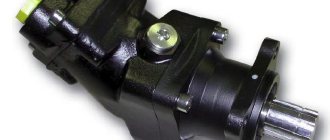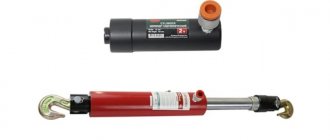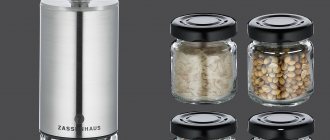Schematic diagrams of axial piston hydraulic machines
An axial piston pump is a technical device that belongs to the category of hydraulic machines, the mechanical energy of the working body of which is converted into the energy of a moving fluid flow. If such machines perform the opposite action (in other words, the energy of the fluid flow is converted into mechanical energy), they are called hydraulic motors. Both hydraulic motors and hydraulic pumps began to be used quite a long time ago, and today they are actively used almost everywhere.
Axial piston pumps are installed on dump trucks, bunker trucks, multi-lifts and other equipment
Axial Piston Hydraulic Pump A hydraulic motor is one of the types of rotary piston hydraulic machines.
Design features of Axial Piston Hydraulic Pumps Hydraulic Motors
Axial-plunger and axial-piston hydraulic machines differ in that the former use plungers as displacers, and the latter use pistons. The most widely used are axial plunger hydraulic machines.
Hydraulic machines are produced with an inclined disk (washer) and with an inclined cylinder block.
To avoid resonance phenomena and to reduce supply and flow pulsations, the number of plungers is always odd.
In the design of the first, the crankshaft is combined with a cylindrical block, securing it with bearings. In this case, the piston system rests directly on the washer. This angle allows the pistons to increase the movement of fluid during rotational movements. Adjustment of such a device occurs by changing the angle of the disk.
Types of axial piston pumps [top]
Depending on what the diagram of an axial-type plunger pump looks like, these devices come in two types: units with an inclined washer (disc) and axial piston pumps with an inclined cylindrical block.
In the design of the first, the crankshaft is combined with a cylindrical block, securing it with bearings. In this case, the piston system rests directly on the washer. This angle allows the pistons to increase the movement of fluid during rotational movements. Adjustment of such a device occurs by changing the angle of the disk.
In the second case, the reciprocating movements of the pistons occur with the tilt of the cylinder block itself. A special feature of this device is the support of the cylindrical block on the second axis and its location at an angle to the main shaft. In the center of the structure there are parallel bores, inside of which there are pistons. The latter are connected to the main shaft using connecting rods. Adjustment is carried out by changing the angle of inclination of the block itself.
It is worth noting that the design of an axial piston pump with an inclined block allows you to change the dimension of the piston stroke. This, in turn, helps to change the working volume indicators in the chambers.
If the axis of rotation of the shaft is parallel to the axes of the working parts, or makes an angle of less than 45° with them, then such a pump is called axial piston .
Displacers in axial piston machines can be pistons or plungers .
Pumps with plungers are sometimes called axial plunger . However, often the names do not reflect this feature, and the pump is called axial piston , regardless of whether the displacer is a piston or a plunger.
In axial piston pumps with an inclined block, the axes of the working bodies are at an angle to the axis of the drive shaft. This angle determines the stroke of the pistons. Its value is less than 45°. In most designs, the angle of inclination is 20°-30°.
When the shaft rotates, the rotor or cylinder block is also driven into rotation through pistons pivotally mounted on the drive shaft.
The rotor is pressed against the spherical surface of the distribution disk, on which two crescent-shaped grooves are made.
When the drive shaft rotates, each of the pistons moves in the rotor holes. The amount of movement depends on the angle of inclination of the block.
When the piston moves, increasing the volume of the working chamber, liquid is sucked through the crescent-shaped groove and fills the chamber.
When the piston moves in the opposite direction, the volume of the working chamber decreases. The liquid is forced out through another crescent-shaped groove. The holes in the rotor in which the pistons move are evenly distributed. At that moment, while some pistons are displacing liquid, others are moving in the opposite direction. This ensures a continuous supply of pump fluid with significantly reduced pulsations.
In axial piston pumps with an inclined disk, the axes of the working elements are parallel to the axis of the drive shaft. The movement of pistons or plungers inside the rotor is ensured by an inclined disk on which the plungers rest through pushers.
The rotor is fixed to the shaft with a key, therefore, when the drive shaft rotates, the rotor rotates, and with it the plungers.
The plungers, when the drive shaft rotates, move in the rotor holes.
As the working chamber increases, liquid fills it. When the plunger moves in the opposite direction, liquid is forced into the pressure line.
In an unregulated axial piston pump-hydraulic motor with reverse flow and an inclined cylinder block (Fig. 3), the axis of rotation of the 7 cylinder block is inclined to the axis of rotation of shaft 1. The spherical heads 3 of connecting rods 4 are embedded in the drive disk 14 of the shaft, which are also secured using spherical hinges 6 in pistons 13.
What is an axial piston type hydraulic pump?
An axial piston hydraulic pump, like a radial piston one, is a positive displacement device that operates by changing the volume of the working chambers. In hydraulic pumps of the axial piston group, such working chambers are formed by borings, which are made in a cylindrical block. Unlike radial piston pumps, axial piston machines have internal working chambers located parallel to the pistons and the axis of the device itself. As the pistons of such a pump move and the cylindrical block rotates, the volume of the working chambers increases or decreases, which allows the device to suck in and release the liquid it pumps.
Sectional view of axial piston pump
Like radial piston pumps, the working chambers of axial piston devices are connected to suction and discharge pipes, through which the pumped water is taken in and released. The process of connecting the working chambers with the suction and discharge pipes of pumps belonging to the axial piston group occurs in stages. In terms of how an axial piston type hydraulic pump works, it is similar to steam and radial piston pumps.
Adjustable axial piston pumps
The axial piston pump-hydraulic motor uses an end-type working fluid distribution system formed by the end 6 of the cylinder block, on the surface of which 9 cylinder windows open, and the end of the hydraulic distributor 7.
In an unregulated axial piston pump-hydraulic motor with reverse flow and an inclined cylinder block (Fig. 3)
The axis of rotation of the 7 cylinder block is inclined to the axis of rotation of the shaft 1. The spherical heads 3 of the connecting rods 4 are embedded in the drive disk 14 of the shaft, which are also secured using spherical hinges 6 in the pistons 13.
The working fluid is supplied and discharged through windows 10 and 11 in cover 9. The pistons located in the upper part of the block perform a suction stroke of the working fluid. At the same time, the lower pistons, displacing liquid from the cylinders, perform a discharge stroke. Lip seal 2 in the front cover of the hydraulic machine prevents oil leakage from the non-working cavity of the pump.
The pump consists of a housing (not shown in the figure), a cylinder block with pistons 2, an inclined disk 3 made in the form of a thrust rolling bearing, and a fixed end distributor 5. The pistons 2 springs 6 are constantly pressed against the inclined disk. Pump shaft 4 transmits rotation to block 1 from the drive motor. The working chambers of the pump are formed by the surfaces of the cylindrical bores (cylinders) of block 1 and the ends of the pistons 2.
Axial piston and axial plunger hydraulic machines are made according to two main schemes: with an inclined disk and with an inclined cylinder block. The most common are pumps with an inclined disk (Fig. 1).
The pump consists of a housing (not shown in the figure), a cylinder block with pistons 2, an inclined disk 3 made in the form of a thrust rolling bearing, and a fixed end distributor 5. The pistons 2 springs 6 are constantly pressed against the inclined disk. Pump shaft 4 transmits rotation to block 1 from the drive motor. The working chambers of the pump are formed by the surfaces of the cylindrical bores (cylinders) of block 1 and the ends of the pistons 2.
To supply and discharge liquid, the distributor 5 has arc-shaped grooves B for suction and H for discharge, which are connected through holes 7 and 8, respectively, to the suction and pressure pipelines. When block 1 rotates, the working chambers alternately communicate with grooves B and H of the distributor.
By changing the angle of inclination of the disk due to its rotation relative to the II-II axis, you can change the pump performance. Moreover, if disk 3 is installed perpendicular to axis II, the movement of pistons 2 in the cylinders will stop, and the pump performance will be zero. Tilt of the disk in the other direction leads to a change in the direction of fluid flow, that is, the diagram shown in Figure 1 allows you to create an adjustable and reversible pump.
The theoretical performance of an axial piston pump is determined by the formula:
Qm = πd 2 (D tan β zn)/4 ,
where: d - piston diameter; D is the diameter of the block circle on which the axes of the cylinders with pistons are located; β is the angle of inclination of the disk; z is the number of pistons in the block; n is the rotational speed of the unit (usually equal to the rotational speed of the drive motor shaft).
The operating characteristics and parameters of axial pumps are determined using the algorithms and formulas described in the section positive displacement pumps.
Field of application of axial piston pumps
Axial piston pumps have found application in hydraulic drives operating at fluid pressures up to 20 MPa. They are installed, for example, in the hydraulic systems of excavators and other mining equipment, bulldozers, in the hydraulic drive of metalworking machines, asphalt rollers, road and construction equipment, and aircraft.
Pumps of this type are used in high-power equipment drives (up to 60 kW). The small radial dimensions of the pumps allow them to be operated at rotor speeds up to n = 25 with high (up to 85%) efficiency. The oil filtration fineness should be no worse than 25 microns (in order to increase the service life, filtration with a fineness of 10 microns is preferable).
For an axial piston pump to operate properly, it is necessary that the surfaces of the distribution system are mutually centered and one of them can move freely to form a layer of lubricant. This is helped by a movable involute spline connection located between the cylinder block and the shaft. In order to prevent divergence of the system joint under the influence of the force of the pistons, the design assumes the presence of a central spring pressure on the block.
And before you undertake the repair of an axial piston pump, we advise you to correctly assess your strengths and knowledge in the field of hydraulics. We strongly recommend that you first take advanced training courses in hydraulics; as a last resort, you can take distance courses in hydraulics, especially since you can order this course without leaving your home. This will cost you much less than if the pump becomes beyond repair after your repair.
Several main functions are performed by the distribution system: a thrust bearing that absorbs the sum of axial pressure forces from all cylinders; switch connecting the cylinders with the suction and discharge lines of the working fluid; a rotating seal that separates the suction and discharge lines from one another and from the cavities around.
For an axial piston pump to operate properly, it is necessary that the surfaces of the distribution system are mutually centered and one of them can move freely to form a layer of lubricant. This is helped by a movable involute spline connection located between the cylinder block and the shaft. In order to prevent divergence of the system joint under the influence of the force of the pistons, the design assumes the presence of a central spring pressure on the block.
Simultaneously with this process, the lower pistons inject working fluid, displacing it from the cylinders. Oil leakage from the non-working cavity of the pump is prevented by the lip seal (2) in the front cover of the hydraulic pump.
- Wear and wear of parts of the pump distribution unit, parts of the piston group, failure of seals.
- The appearance of burrs on the planes of rubbing parts.
- The operation of an axial piston pump is accompanied by an increase in pressure in the oil line.
- The main shaft of the pump does not rotate.
Slant block or washer pumps
In pumps with an inclined block, the working cylinder is installed at a slight angle. The product gets its name from the type of bores that represent working cavities. In the technological dictionary they are called axial. These pumps operate on the same principle as an internal combustion engine. The rotational action is transmitted through the drive shaft directly to the cylinder block through the connecting rods to the pistons, part of which, up to a certain mark, is fed by the rotor. Another part plunges inside it. The resulting difference in positions reduces or increases the useful volume of the axial chambers, which is accompanied by the suction of liquid and pushing by the supply lines to the discharge point.
Diagram of the device, where the drive shaft is fixed to the cylinder and mounted on bearings
The sucked liquid is forced out of the technological cavities through special windows that are cut out in the bottom of the cylinder block, as well as through window-holes made in the distribution disk. From there it enters the outlet channels of the housing and the supply line.
The working volume of the axial borings is proportional to the angle of inclination of the functional cylinders. By changing it, the amount of fluid passed through will also increase or decrease in a certain unit of time.
Thus, a variable inclination angle in the pump will indicate that its type is a pump with adjustable flow.
The operating principle of a swashplate pump is practically no different from that already presented above. As in the first case, pistons move along axial bores in the cylinder block. They rest on a technological inclined washer, which serves as their working surface, creating an angle perpendicular to the axis of the functional cylinder block.
APG torque
By accordingly changing the angle of inclination of the specified washer, the operator is able to regulate the volume of liquid displacing the pump. Such pumps are adjustable. The secret of their versatility lies in the ability to create a reversible liquid supply; accordingly, the receiving and supply pipelines do not change places.
VIDEO: Operating principle of an axial piston pump with a swashplate
Adjustable swashplate units
In the example under consideration, a pump with an inclined disk is used in a system of volumetric hydraulic drives, in which the pump itself and the hydraulic pump are represented by two separate independent functional units operating on the principle of a closed system. They are no less actively used in mobile structures equipped with hydraulic drive, and in technologically complex equipment:
- combines,
- cranes
- road vibration compactors,
- concrete mixers on a car platform, etc.
The products are widely used due to their easily digestible control system and small functional dimensions.
The liquid supply of a pump with an inclined disk directly depends on the rotational speed of the rotor and the dimensions of the axial cavities, which are adjusted using the angle of inclination of the rotary disk, the functional surface of the product. By tilting this disk in opposite directions relative to the neutral initial position, the operator is able to change the direction of flow of the supplied liquid or reverse it.
Read also: How to unscrew a bolt with broken threads
Diagram of a unit with an inclined block
It is worth noting that high-pressure pumps are distinguished by their technologically predictable ability to work in tandem with a hydraulic distributor. They differ from other types of this class by letter markings:
Marking
Specifications
The hydromechanical, complexly engineered proportional starting system provides the operator with the ability to hold the swashplate in position using a special control lever in the required position to maintain the required fluid level
Three-position electrical control unit, used according to the on/off/on principle. Duplex operation possible with control unit of maximum functional volume
The starting hydraulic-proportional complex engineering system helps the operator keep the inclined disk in the required position by means of a hydraulic control signal. Used in complex technological complexes and/or machines
A proportional, complex electrical engineering control system is designed for stepless change of the working axial chambers of the pump. The effect is achieved by changing the strength of the electric current supplied to two proportionally standard magnets. Technologically, the product has the ability to operate pumps using the tandem system or in pairs
Fixed with tilt block
The design of an axial piston pump is nothing special. The range of their application is extremely narrow. They were developed to work on hydraulically driven volumetric machines. In terms of its functionality, a pump with an inclined block converts mechanical energy obtained from the rotational movement of the drive shaft into hydraulic energy to create the movement of liquid flows. It is worth noting that the supply of pumped liquid will always be proportionally equal to the working volume of the axial cavities, as well as the rotation speed of the working shaft.
Unregulated APG device
The specified pumps are used exclusively in open-type hydraulic systems. The specified piston pumps, the operating principle of which is virtually universal, are produced not only with left-hand rotation of the shaft, but also with right-hand rotation. The method of shaft removal is selected according to the working situation or application plan.
VIDEO: Pump design
For open, adjustable hydraulic systems
The proposed axial pump, or plunger pump, as it is also called, is equipped with the ability to adjust the volume of the working bore cavities due to the presence of an inclined washer. This type of pump is widely used in areas where there is work with high pressures in supply pipelines.
Adjustable for open hydraulic systems
In particular, they are widely used in:
- road construction hydraulic systems;
- open centralized;
- machines serving mines.
Achieving the required pressure is achieved by manipulating the supply regulator. With its help, the maximum compression of the liquid is limited in the supply pipeline and the achieved value is maintained for the required operating time of the product, despite the speed of the drive shaft and/or the loads applied to it.
This unit is also capable of working in tandem with other feeding devices, such as gear-type pumps.
Advantages and disadvantages of axial piston pumps
Positive displacement and vane pumps are the most popular now. The functions of volumetric machines are carried out by constantly changing the size of their working chambers. They are connected to pipes for inlet and outlet of liquid. This type of device includes an axial piston pump. This is a well-known unit that is used in all hydraulic systems for industrial purposes.
Main advantages of the device:
- Performing work functions at high pressure up to 35-40 MPa.
- The rotation range in the machine is 500-4000 thousand rpm.
- Ability to change working volume at high pressure.
- Quick speed adjustment.
- The small size of the working bodies contributes to a low inertial moment.
- With a small installation weight, quite a lot of power.
Disadvantages and weaknesses:
- Complexity of design.
- Frequent failures of parts with rubbing surfaces.
- Increased pulsation of flow and supply.
- High pressure pulsation throughout the system.
- The complexity of the design makes troubleshooting difficult.
- Repairs take a long time.
- High cost of operation, repair, maintenance.
Rice. 1. Scheme of operation of an axial piston pump
All malfunctions are caused by wear of shafts, seals, pistons, and all rubbing parts. Their replacement and repair require a significant investment of time, money, human resources, energy, materials, tools, and mechanisms.
Manifoldly increase the service life of operating mechanisms, possibly using new technologies that make it possible to restore and protect mating friction pairs from wear.
Such equipment consists of the following components and parts:
Advantages and disadvantages of use
Axial piston hydraulic pumps are used much more often than radial piston and steam models. This is due to the compact size and high performance of axial equipment. The small dimensions of the working parts make it possible to achieve a low moment of inertia. At the same time, during operation of the equipment, a fairly high rotation frequency can be noted.
The axial piston motor operates with a frequency in the range from 600 to 4 thousand revolutions per minute.
In addition, unlike the steam model, piston models allow you to regulate the volume, direction and force of energy supply in the system. At the same time, the devices can operate under conditions of increased hydraulic pressure. They are characterized by high performance even at pressures within 40 MPa, while radial piston equipment can only operate correctly at 30 MPa.
Among the advantages of axial piston pumps, long service life should be noted
The disadvantages of the devices include:
- Uneven supply and consumption of water;
- Large pulsation during hydraulic motor operation;
- Sensitivity of equipment to contaminated working environment;
- High noise level (compared to gear and plate units).
In addition, equipment of this type is quite expensive. Improper use can lead to serious damage. Eliminating them will not be easy due to the complex design of the pumps.
Device and principle of operation
Such equipment consists of the following components and parts:
- pistons are located in a cylindrical block;
- there is a main or drive shaft;
- connecting rods;
- Switchgear;
- thrust disc.
The operating principle of the device is based on the rotation of the drive shaft, the action of which is transmitted to a special cylindrical block. During this, the pistons move forward in the direction of the block axis. As a result, the mechanisms perform reciprocating movements (axial), due to which the device was named.
- Double non-power cardan (if the shaft is combined with a connecting rod block)
- Double power cardan (if the connecting rod block bears most of the load)
Fixed axial pumps
In unregulated pumps, the angle of inclination of the block or disk does not change.
Axial piston pump with inclined block
When the shaft 1 of the pump, mounted in bearings 2, rotates, the inclined block 3 is driven into rotation by articulated pistons 4. During operation, the pistons move linearly relative to the block. The length of the piston stroke depends on the angle of inclination of the block. The distribution disk 5 has crescent-shaped grooves 6, one of which is connected to the suction line, the second to the discharge line.
Calculation of the flow of an axial piston pump with an inclined block
The theoretical flow of a positive displacement pump is proportional to its working volume q and shaft speed n:
The displacement of an axial piston pump can be calculated using the formula:
- where d is the piston diameter
- z - number of pistons
- h - piston stroke
The piston stroke of an axial piston pump with an inclined block depends on the angle α of the block inclination and the diameter of the pistons D:
To calculate the actual flow, it is necessary to multiply the theoretical one by the volumetric efficiency (0.9. 0.98 for piston pumps):
Axial piston pump with inclined disc
Cylinder block 2 is installed on drive shaft 1. Pistons 4 installed in shoes 3 rest on an inclined disk (or washer). When the shaft with block 5 rotates, the pistons, due to the tilt of the disk, will perform a reciprocating movement relative to the block. The distribution disk 6 has crescent-shaped windows that connect to the suction and discharge lines.
Calculation of flow of an axial piston pump with an inclined disk
The design diagram is shown in the figure.
To calculate the pump flow, you need to know its displacement and drive shaft speed:
The piston stroke depends on the geometry of the swashplate pump.
- where D is the diameter of the pistons
- α - angle of inclination of the washer
You can order an axial piston pump, the price of which is very affordable, of several types. Such devices can operate in open and fully closed hydraulic machines.
Operating principle [edit | edit code ]
When the hydraulic machine shaft rotates (Fig. 1), the plunger located at the bottom (at the bottom dead center) moves upward, and at the same time moves along the axis of the pump “from the edge” of the cylinder block - suction occurs. At the same time, the plunger that was at the top moves down and moves “towards the edge” of the cylinder block - injection occurs. The plungers that are currently pumping are connected together by one groove - and form a high-pressure cavity; and those plungers that are currently performing suction are connected together by another groove - and form a low-pressure cavity. The high and low pressure cavities are separated from each other. The point at which the plunger transitions from the high-pressure cavity to the low-pressure cavity is called the top dead center, and where the reverse transition occurs is the bottom dead center. At the moment the plunger passes through one of the dead points, locked volumes are formed.
An axial piston pump is a rotary piston pump in which the angle between the axis of rotation of the rotor and the axes of the working parts does not exceed 45°.










